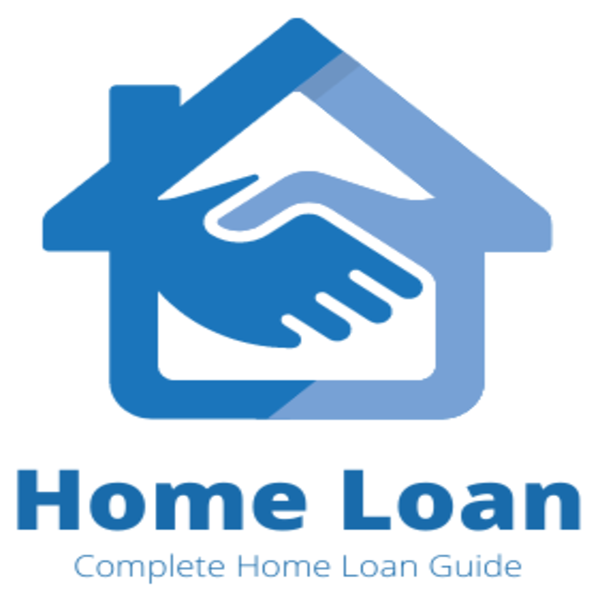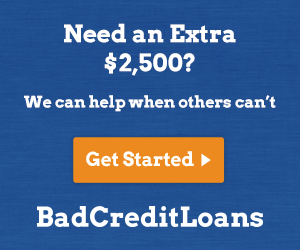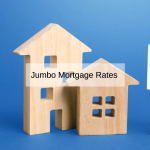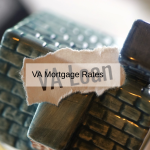Home equity loans offer homeowners the opportunity to borrow against the equity in their homes for various purposes, including home improvements, debt consolidation, and major expenses. However, home equity loans may not be the right option for everyone due to factors such as eligibility requirements, interest rates, and repayment terms. Fortunately, several alternatives to home equity loans exist, providing homeowners with flexibility and choice when accessing funds for their financial needs. In this comprehensive discussion, we will explore six alternative options to home equity loans and highlight their features, advantages, and considerations.
1. Personal Loans
Personal loans are unsecured loans that borrowers can obtain from banks, credit unions, or online mortgage loan lenders. Unlike home equity loans, personal loans do not require collateral, making them suitable for homeowners who do not want to risk their home equity. Here are some key features of personal loans:
- Unsecured: Personal loans do not require collateral, making them accessible to homeowners without sufficient home equity.
- Fixed Interest Rates: Personal loans often come with fixed interest rates, providing predictability in monthly payments.
- Flexible Use of Funds: Borrowers can use personal loan funds for various purposes, including home improvements, debt consolidation, or unexpected expenses.
- Shorter Loan Terms: Personal loans typically have shorter loan terms compared to home equity loans, ranging from one to seven years.
- Extended Use: Personal loans can be used for various purposes, including medical expenses, vacations, or wedding expenses. They offer financial flexibility without risking home equity.
2. Cash-Out Refinance
A cash-out refinance involves refinancing an existing mortgage for a higher amount than the current loan balance and receiving the difference in cash. Cash-out refinancing allows homeowners to access their home equity while potentially obtaining a lower interest rate on the new mortgage. Here are some key features of cash-out refinancing:
- Access to Home Equity: Cash-out refinancing enables homeowners to convert a portion of their home equity into cash without taking out a separate loan.
- Lower Interest Rates: Homeowners may qualify for lower interest rates on the new mortgage compared to other types of loans.
- Extended Repayment Terms: Cash-out refinancing may extend the repayment term of the mortgage, resulting in lower monthly payments.
- Closing Costs and Fees: Cash-out refinancing involves closing costs and fees similar to those of a traditional mortgage, including appraisal fees, origination fees, and closing costs.
- Tax Benefits: Interest paid on a cash-out refinance may be tax-deductible, providing potential savings for homeowners. Consult with a tax advisor to understand eligibility and implications.
3. Home Equity Line of Credit (HELOC)
A home equity line of credit (HELOC) is a revolving line of credit that allows homeowners to borrow against their home equity loan va line of credit as needed. HELOCs function similarly to credit cards, providing flexibility and convenience in accessing funds. Here are some key features of HELOCs:
- Revolving Credit: HELOCs offer a revolving line of credit, allowing homeowners to borrow, repay, and borrow again up to the credit limit during the draw period.
- Variable Interest Rates: HELOCs typically have variable interest rates tied to an index, which may result in fluctuating monthly payments.
- Interest-Only Payments: During the draw period, borrowers may be required to make interest-only payments on the amount borrowed.
- Flexible Repayment Options: After the draw period ends, HELOCs enter the repayment period, during which borrowers must repay the outstanding balance, often over a fixed term.
- Accessibility: HELOCs provide homeowners with access to funds as needed, offering financial flexibility for various expenses, including home renovations, education costs, or emergencies.
4. Personal Lines of Credit
Similar to HELOCs, personal lines of credit are revolving lines of credit that borrowers can access as needed. Personal lines of credit do not require collateral and offer flexibility in borrowing and repayment. Here are some key features of personal lines of credit:
- Revolving Credit: Personal lines of credit provide access to a predetermined credit limit, allowing borrowers to borrow, repay, and borrow again as needed.
- No Collateral Required: Personal lines of credit are unsecured, eliminating the need for collateral such as home equity.
- Variable Interest Rates: Personal lines of credit often come with variable interest rates, which may fluctuate over time.
- Flexible Repayment Terms: Borrowers can choose to repay the outstanding balance in full or make minimum payments based on their financial situation.
- Versatility: Personal lines of credit offer flexibility in borrowing for various purposes, including loans for home improvement, medical expenses, or unexpected bills.
5. Credit Cards
Credit cards offer another alternative for accessing funds for various expenses, including home improvements, repairs, and emergencies. While credit cards may have higher interest rates compared to other loan options, they provide convenience and flexibility in borrowing. Here are some key features of using credit cards as a home equity loan alternative:
- Convenience: Credit cards offer quick and convenient access to funds for immediate expenses or emergencies.
- Flexible Repayment Options: Credit cardholders can choose to pay the minimum payment or the full balance each month, providing flexibility in repayment.
- Rewards and Benefits: Some credit cards offer rewards programs, cashback incentives, or promotional offers that can provide additional value for cardholders.
- Higher Interest Rates: Credit cards may have higher interest rates compared to other loan options, potentially resulting in higher overall borrowing costs if not paid off promptly.
- Introductory Offers: Some credit cards offer introductory APR periods with low or 0% interest rates, providing an opportunity for interest-free borrowing for a limited time.
6. Peer-to-Peer Lending
Peer-to-peer (P2P) lending platforms connect individual borrowers with investors willing to fund their loans. P2P lending offers an alternative source of financing outside traditional banks and financial institutions. Here are some key features of P2P lending as a home equity loan alternative:
- Online Platform: P2P lending platforms operate online, providing borrowers with access to a network of investors willing to fund their loan requests.
- Flexible Loan Terms: Borrowers can choose from a variety of loan terms, repayment options, and interest rates based on their financial needs and credit profile.
- Competitive Rates: P2P loans may offer competitive interest rates compared to traditional bank loans or credit cards, depending on the borrower's creditworthiness and loan terms.
- Streamlined Application Process: P2P lending platforms typically offer a streamlined application process with quick approval and funding for qualified borrowers.
- Risk Assessment: P2P lending platforms assess borrower creditworthiness and assign interest rates based on risk profiles, providing transparency and accountability in the lending process.
Considerations Before Choosing an Alternative to Home Equity Loans
Before selecting an alternative to home equity loans, homeowners should consider the following factors:
- Interest Rates and Fees: Compare interest rates, fees, and repayment terms for each alternative to determine the most cost-effective option.
- Creditworthiness: Assess your credit score and financial history to determine eligibility and potential interest rates for each loan alternative.
- Loan Purpose: Consider the purpose of the loan and how it aligns with your financial goals and needs.
- Repayment Ability: Evaluate your ability to repay the loan based on your current financial situation, income, and expenses.
- Risk Tolerance: Consider your risk tolerance and preferences regarding fixed or variable interest rates, collateral requirements, and repayment terms.
- Financial Goals: Evaluate your long-term financial goals and how each loan alternative fits into your overall financial plan.
While home equity loans offer a convenient way to access funds using evergreen home loans equity as collateral, several alternatives exist for homeowners seeking flexible borrowing options. Personal loans, cash-out refinancing, HELOCs, personal lines of credit, credit cards, and peer-to-peer lending provide homeowners with a variety of choices based on their financial needs and preferences. Before selecting an alternative to home equity loans, homeowners should carefully evaluate the features, advantages, and considerations of each option to make an informed decision aligned with their long-term financial goals and objectives. By exploring alternative loan options, homeowners can find the right financing solution to meet their individual needs and achieve their financial objectives.
FAQ for "6 Home Equity Loan Alternatives To Consider"
Q. What are the main alternatives to home equity loans?
The main alternatives include personal loans, cash-out refinancing, home equity lines of credit (HELOCs), personal lines of credit, credit cards, and peer-to-peer lending.
Q. How do personal loans differ from home equity loans?
Personal loans are unsecured loans that do not require collateral, making them accessible to homeowners without sufficient home equity. Home equity loans, on the other hand, are secured by the borrower's home equity.
Q. What is cash-out refinancing, and how does it work?
Cash-out refinancing involves refinancing an existing home mortgage loans for a higher amount than the current loan balance and receiving the difference in cash. This allows homeowners to access their home equity while potentially obtaining a lower interest rate on the new mortgage.
Q. What are the key features of home equity lines of credit (HELOCs)?
HELOCs offer a revolving line of credit that allows homeowners to borrow against their home equity as needed. They come with variable interest rates, flexible repayment options, and accessibility to funds during the draw period.
Q. How do personal lines of credit compare to HELOCs?
Personal lines of credit are unsecured revolving lines of credit that do not require collateral, similar to HELOCs. However, personal lines of credit may have different terms, interest rates, and borrowing limits.
Q. What are the advantages of using credit cards as an alternative to home equity loans?
Credit cards offer convenience, flexible repayment options, and potential rewards or benefits. However, they may come with higher interest rates compared to other loan options.
Q. How does peer-to-peer lending work as an alternative to home equity loans?
Peer-to-peer lending platforms connect individual borrowers with investors willing to fund their loans. Borrowers can access funds with competitive rates and flexible loan terms through online platforms.
Q. What factors should homeowners consider when choosing an alternative to home equity loans?
Homeowners should consider factors such as interest rates, fees, creditworthiness, loan purpose, repayment ability, risk tolerance, and long-term financial goals before selecting an alternative to home equity loans.
Q. Are there any tax implications associated with the alternatives to home equity loans?
Homeowners should consult with a tax advisor to understand any potential tax implications, such as deductibility of interest payments or eligibility for tax benefits, associated with the chosen alternative to home equity loans.
Q. How can homeowners determine which alternative is the best fit for their financial needs?
Homeowners should carefully evaluate the features, advantages, and considerations of each alternative, comparing them based on their individual financial situation, goals, and preferences.














